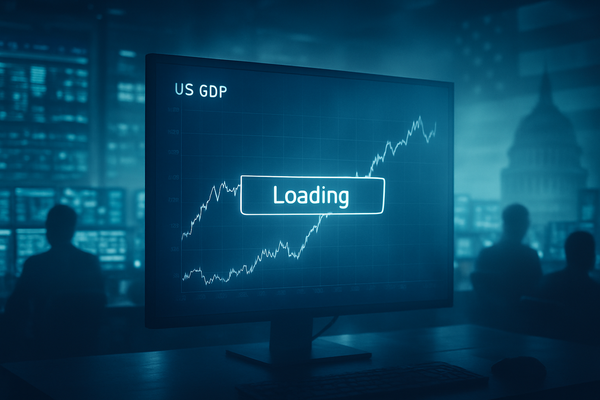The Chasm Deepens: Unpacking the Persistent Global Wealth Divide

The specter of widening within-country wealth inequality continues to cast a long shadow over global economies and societies, posing one of the most pressing challenges of our time. Far from being a niche economic concern, this persistent and accelerating chasm between the rich and the poor within national borders is fundamentally reshaping social structures, political landscapes, and the very fabric of democratic trust. Recent data unequivocally highlights an alarming concentration of wealth at the apex of the economic pyramid, while a significant portion of the global population struggles with stagnant assets and diminishing opportunities.
This deepening disparity carries immediate and profound implications. Economically, it acts as a drag on sustainable growth, stifles social mobility, and can lead to macroeconomic instability. Socially, it fuels discord, erodes trust in institutions, and is increasingly linked to poorer health outcomes and the rise of political extremism. As nations grapple with complex global challenges, the internal fracturing caused by extreme wealth inequality presents a formidable obstacle to collective progress and stability, demanding urgent attention from policymakers, businesses, and civil society alike.
The Perfect Storm: Technology, Policy, and Capital Driving the Divide
The current epoch of widening within-country wealth inequality is not merely an unfortunate byproduct of economic cycles, but rather the cumulative outcome of a complex interplay of forces. At its core, this phenomenon is driven by profound technological shifts, specific policy choices often favoring capital over labor, and the inherent, compounding advantages of unequal capital ownership. These factors have conspired over recent decades to accelerate the concentration of wealth at the very top, while leaving large segments of the population struggling to gain economic ground.
Technological advancements, particularly the rapid march of automation and artificial intelligence, represent a potent force in reshaping wealth distribution. Automation tends to increase the demand for capital relative to labor, consequently boosting returns on wealth. This means individuals with substantial investments and assets see their fortunes grow at an accelerated pace. Simultaneously, automation often leads to stagnant wages for lower-skilled workers, as jobs are displaced or their bargaining power diminishes. The benefits of productivity gains from these innovations frequently accrue to the owners of capital rather than to the broader workforce, creating a 'skill-biased technological change' that widens the income gap between highly skilled, tech-savvy professionals and those without the requisite qualifications. Public companies in the tech sector, such as NVIDIA (NASDAQ: NVDA) and Microsoft (NASDAQ: MSFT), are at the forefront of this technological revolution, experiencing significant growth and creating substantial wealth for their shareholders and top-tier employees, further illustrating this dynamic.
Policy choices, spanning fiscal measures, taxation, and deregulation, have also played a critical, often exacerbating, role. Over the past four decades, many developed nations have witnessed a marked shift towards less progressive tax systems, characterized by cuts to top income tax rates and reduced corporate taxation. This has allowed the wealthiest individuals and corporations to retain a larger share of their earnings, accelerating wealth accumulation at the top. Simultaneously, globalized financial systems have facilitated tax evasion and avoidance by the affluent, further eroding the tax base that could fund public services designed to mitigate inequality. The weakening of social welfare programs and underinvestment in public services like education and healthcare, often a consequence of reduced tax revenues, further limits opportunities for upward mobility for less affluent segments of society.
Finally, the unequal ownership of capital and financial assets acts as a fundamental engine of wealth disparity. Those who possess significant capital often enjoy higher average rates of return on their investments, benefiting from superior access to information, sophisticated capital management strategies, and greater incentives to seek higher-yield opportunities. This creates a powerful feedback loop where the rich get richer at an increasingly rapid pace. Furthermore, intergenerational transfers, such as inheritances, and disparities in asset-building opportunities – like retirement savings and homeownership – disproportionately favor already affluent families, perpetuating wealth disparities across generations. This foundational imbalance in asset ownership ensures that even modest economic growth can translate into magnified wealth gains for the capital-owning elite, while those reliant solely on labor income see their share diminish.
The Bifurcated Economy: Who Thrives and Who Struggles in a Divided Landscape
The deepening wealth gap has created a starkly bifurcated economy, where certain sectors and companies are positioned to thrive amidst the concentration of capital at the top, while others, particularly those reliant on broad-based consumer spending, face significant headwinds. This divergence profoundly impacts business models, profitability, and stock performance, reinforcing the economic divide.
At the top of the economic pyramid, luxury goods and services companies are clear beneficiaries. As the affluent accumulate ever more wealth, their demand for high-end products and exclusive experiences remains robust, often insulated from broader economic downturns or inflationary pressures. Brands like LVMH Moët Hennessy Louis Vuitton (EPA: MC), with its vast portfolio of luxury brands, and high-end jewelers like Tiffany & Co. (NYSE: TIF), continue to see strong sales and high-profit margins. Their business models often pivot to target ultra-wealthy clients, ensuring consistent demand for premium-priced items and exclusive offerings, which translates into resilient stock performance.
The financial services sector also emerges as a significant winner. The concentration of wealth means a larger pool of assets requiring management, investment, and specialized financial planning. Firms offering wealth management, private banking, and sophisticated investment products see increased demand. Companies like JPMorgan Chase & Co. (NYSE: JPM) and Goldman Sachs Group Inc. (NYSE: GS) benefit from higher assets under management, increased fee income from investment services, and greater trading volumes, fueling their profitability and often leading to strong stock performance as they capture a larger share of the growing wealth held by the rich.
Conversely, sectors and businesses dependent on a robust middle class and broad consumer spending are increasingly struggling. Traditional retail, particularly mid-market department stores and clothing brands that historically catered to a wide demographic, faces a severe squeeze. With stagnant wages for lower and middle-income households, discretionary spending power declines, leading to reduced sales volumes and heightened price sensitivity. Companies like Macy's (NYSE: M) or mid-range fashion retailers often grapple with declining revenues, store closures, and poor stock performance as the retail market polarizes into luxury and deep discount segments.
Small businesses across various industries are also disproportionately disadvantaged. They often rely heavily on local consumer spending, which is suppressed by wealth inequality. Furthermore, they face greater barriers to accessing financing compared to larger corporations, as household savings increasingly flow into financial markets that primarily fund large publicly traded companies. This limited access to capital, coupled with intense competition from dominant corporations leveraging economies of scale, squeezes profit margins for small enterprises, hindering their growth and ability to create jobs, thus limiting avenues for broader wealth creation within communities.
Systemic Shifts: Industry Reworking and Societal Strain
The relentless widening of the wealth gap is not merely a statistical anomaly but a powerful systemic force that is reshaping entire industries, sending ripple effects through competitive landscapes, and instigating urgent calls for regulatory and policy interventions. This phenomenon is deeply intertwined with several pervasive global trends, collectively driving an economy that increasingly rewards capital and highly skilled labor at the expense of broad-based prosperity.
One of the most profound industry trends influenced by wealth inequality is the acceleration of technological advancements and automation. While these innovations promise efficiency, they concurrently shift global value chains towards higher capital and skill intensity. This creates a scenario where employment generation and wage growth prospects for less-skilled workers diminish, while specialized, high-skill roles become more lucrative. Consequently, industries reliant on routine tasks face significant disruption, with profits increasingly decoupled from overall wage growth. This dynamic is evident in the shift of manufacturing towards automation, where firms like Tesla (NASDAQ: TSLA) leverage advanced robotics, contributing to productivity gains that often accrue to shareholders and top executives rather than the broader workforce.
The ripple effects extend across the economy. A shrinking and financially constrained middle class leads to a contraction of broad consumer demand, forcing retailers and manufacturers to either cater to the high-end luxury market or compete fiercely in the discount segment. This creates significant pressure on traditional middle-market businesses, leading to a market bifurcation where consumer choices for moderately priced products diminish. Furthermore, wealth inequality can intensify competition among those vying for scarce economic resources, while regulations, sometimes unintentionally, can increase compliance costs, particularly for small businesses. This acts as a barrier to entry for startups, protecting established incumbents and fostering market concentration and monopoly power. Dominant firms in "winner-takes-all" markets, such as Amazon (NASDAQ: AMZN) in e-commerce or Meta Platforms (NASDAQ: META) in social media, gain outsized market power, influencing wages, consumer prices, and even access to essential goods and services.
The growing disparity also necessitates significant regulatory and policy implications. Governments worldwide are under increasing pressure to address the societal fallout. This often translates into discussions around more progressive taxation schemes, including higher taxes on high incomes, capital gains, and wealth, with revenues earmarked for public investments in education, healthcare, and social safety nets. Concerns about unchecked corporate power and monopolies are spurring renewed interest in antitrust and competition policy, aiming to foster fairer markets and curb anti-competitive practices that harm consumers and stifle innovation. Labor laws are also under scrutiny, with calls for strengthening minimum wage protections and collective bargaining rights to ensure more equitable wage growth.
Historically, the current period bears striking resemblances to the Gilded Age of the late 19th and early 20th centuries, an era marked by rapid industrialization and extreme wealth inequality. Then, as now, immense fortunes were amassed by a few "robber barons," while the working classes faced poverty and exploitation. This historical precedent reminds us that such disparities can lead to significant social unrest and eventually trigger major policy shifts, including the rise of progressive movements and the strengthening of labor unions. Conversely, the post-World War II period saw a concerted effort towards "shared prosperity," demonstrating that policy choices can effectively reduce inequality. The current "Great Divergence" since the 1970s, characterized by reduced marginal tax rates for the wealthy and deregulation, highlights how policy shifts have actively contributed to the current predicament, raising concerns among economists about a potential return to early 20th-century levels of inequality, which could usher in a "rentier society" marked by slow innovation and economic sclerosis.
Navigating the Divide: Pathways to a More Equitable Future
The trajectory of within-country wealth inequality remains a critical determinant of global stability and prosperity, with the coming decades presenting a fork in the road. Without concerted and strategic interventions, the forces currently at play—technological disruption, demographic shifts, and entrenched policy biases—threaten to further entrench and intensify the divide, leading to profound societal and economic ramifications. However, there are clear pathways for businesses and governments to pivot, fostering a more equitable and resilient future.
In the short term, the economic fallout from recent global crises, such as the COVID-19 pandemic, has already exacerbated wealth disparities, particularly in developing nations, where wage growth has lagged significantly behind inflation. This immediate pressure points to continued social strain and economic precarity for vast segments of the population. Looking further into the long term, the unchecked advancement of artificial intelligence and automation could disproportionately benefit the top 1% to 10% of the population, leading to an even more pronounced concentration of wealth. Demographic trends, like declining birth rates in developed countries, could also contribute to greater wealth accumulation through fewer inheritors. The persistence of wealth, often passed down through generations, ensures that without proactive measures, historical disparities will continue to compound.
For businesses, strategic pivots are not merely altruistic but essential for long-term sustainability and market stability. A shift towards "predistribution," focusing on fair compensation, closing internal pay gaps, and ensuring equal pay for equal work, can foster a more motivated and productive workforce. Investing in workforce development, removing hiring biases, and prioritizing employee well-being can mitigate the negative impacts of inequality on morale and productivity. Companies like Unilever (NYSE: UL) and Patagonia (private), known for their focus on stakeholder capitalism, exemplify models where purpose-driven approaches align business success with positive social impact. Furthermore, supporting small businesses, which are vital for local wealth creation and job generation, can be a crucial adaptation strategy for fostering broader economic inclusion.
Governments hold the most powerful levers for change. Progressive tax reforms, including higher taxes on capital gains, wealth, and inheritances, are essential to counter wealth concentration. Revenues from these measures can then be channeled into robust public services such as education, affordable healthcare, and childcare, creating a genuine "ladder of opportunity" for all citizens. Strengthening labor rights, including minimum wage laws and collective bargaining, can empower workers and improve wage growth, while asset-building initiatives like automatic retirement plan enrollments and savings credits can help lower and middle-income households accumulate wealth. The responsiveness of governments to these challenges will largely determine whether societies steer towards a "Productivity Acceleration" scenario—where strategic investments in technology and human capital lead to robust, inclusive growth—or descend into a "World Divided," characterized by increased internal and external inequality, declining international cooperation, and social fragmentation.
Emerging markets face a complex landscape. While many grapple with high levels of existing inequality, political instability, and infrastructure deficits, they also present significant opportunities. Rapid economic growth rates, expanding middle classes, and a readiness for technological adoption offer pathways for inclusive development. Countries like Brazil, which have successfully implemented policies to reduce income inequality through government investment in education, demonstrate that proactive measures can yield positive results. The choice is clear: either passively observe the deepening chasm or actively pursue policies and business practices that prioritize equitable growth, ensuring that the benefits of progress are broadly shared, rather than concentrated at the top.
Conclusion
The persistent and widening within-country wealth gap stands as a defining challenge of our era, representing not merely a statistical aberration but a fundamental reordering of economic and social power. This disparity, fueled by a complex interplay of technological shifts, policy choices, and unequal capital ownership, has profound implications for economic growth, social cohesion, and democratic governance worldwide. Its ongoing expansion threatens to create a more volatile and fragmented global landscape, where opportunities become increasingly stratified and societal trust erodes.
Moving forward, the market environment will continue to reflect this bifurcation. Industries catering to the affluent, such as luxury goods and specialized financial services, are likely to demonstrate resilience and growth, driven by the concentrated purchasing power at the top. Conversely, sectors reliant on a robust middle class and broad consumer spending will face sustained pressure, leading to ongoing consolidation and struggles for traditional retailers and small businesses. The increasing politicization of wealth inequality also signals a likelihood of greater regulatory scrutiny and potential policy shifts aimed at redistribution and market rebalancing.
The lasting impact of this phenomenon could be the erosion of fundamental democratic principles and a hindrance to long-term prosperity. Unchecked, it risks ushering in a "rentier society" characterized by limited social mobility and innovation, exacerbating social unrest and political polarization. Investors, therefore, must navigate this landscape with both financial acumen and a keen awareness of broader societal trends. In the coming months, astute investors should closely monitor policy developments—particularly regarding progressive taxation, social spending, and antitrust enforcement—as these will significantly shape market dynamics. Furthermore, a strategic focus on companies that exhibit resilient growth, particularly in high-end markets, and those demonstrating strong ESG (Environmental, Social, and Governance) credentials, particularly in areas addressing inequality, may offer both robust returns and alignment with evolving global imperatives. Diversification and preparedness for increased market volatility will also be paramount as the world grapples with the profound consequences of this deepening economic chasm.



